Wyoming Sees Increases in New Jobs, Personal Income and Tax Revenue in Some Sectors, Report Says
Mining, agriculture and leisure sectors grew while housing industry dipped
April 5, 2023
All but two counties in Wyoming saw increases in taxable sales from the prior year, with Weston and Carbon taking the lead at 47.8% and 44.4% respectively. (Courtesy graphic from the Wyoming Economic Analysis Division based on data from the Wyoming Department of Revenue)
By Shen Wu Tan
Special to the Wyoming Truth
Wyoming added thousands of new jobs in the fourth quarter of 2022 compared to the previous year and saw an increase in personal income and tax revenue in some sectors, but experienced downturns in recreation and housing, an economic report released Tuesday revealed.
The state recorded 2% – about 5,700 – more payroll jobs in the last quarter largely due to the mining and leisure and hospitality industries, compared to the U.S. growth rate of 3.4%, according to a report from the Wyoming Economic Analysis Division.
“The speed of the recovery continued to be slower than the U.S., but it's similar to the previous two quarters,” Wenlin Liu, chief economist of the Wyoming Division of Economic Analysis, told the Wyoming Truth.
Employment in the mining industry experienced a year-over-year increase of 8.8%, while employment in professional and business services already exceeded levels prior to the COVID-19 pandemic by 8.7%. Leisure and hospitality added about 1,400 jobs, professional and business services added about 800 jobs and private education and health services added about 700 jobs.
“As a result, Wyoming's economic structure has become more diversified,” Liu said. “Wyoming has one of the least diversified economies in the country because of our higher proportion of mining (including coal, oil, and natural gas), construction industries and government sector, but lower proportion of manufacturing, professional services, and private education and health services.”
When compared to the fourth quarter of 2019, the state’s overall employment was still behind by 1.4% or 4,100 jobs due to declines in the mining, construction and government sectors. Wyoming’s unemployment rate also rose to 3.9%, slightly above the national average of 3.6%.
Total taxable sales grew 13.6% to $5.7 billion in the fourth quarter of 2022 from the previous year, mostly from a rebound in mining, expansions in retail trade and heightened inflation, according to the state economic analysis division. Although the mining industry expanded 59.9%, it was down 10.4% in taxable sales from the fourth quarter of 2019. Yet, Wyoming’s total taxable sales were still 15.1% higher as it experienced a 29% spike in retail trade. Meanwhile, leisure and hospitality grew 3.1% despite flooding in Yellowstone National Park last summer.
Most Wyoming counties, 21 out of 23, also saw increases in taxable sales from 2021, with Weston and Carbon leading at 47.8% and 44.4% respectively.
Mineral severance taxes were 17.8% higher than the last quarter of 2021. But these taxes dipped about 9.5% from the previous quarter.
How recreation, agriculture and housing sectors fared
Recreational visits to Yellowstone decreased 26.4%, while visits to the Grand Teton National Park dropped 23.3%. However, lodging sales were up 2.6% in Teton County and increased 1.8% for the state overall.
Farmers in Wyoming saw a rebound in index prices for livestock and products after four consecutive quarters of declines. The fourth quarter of 2022 was 14.8% higher than the prior year, which might be because of lower production costs.
The Wyoming housing market, in alignment with national trends, underwent a slowdown after the Federal Reserve raised interest rates and mortgage rates spiked. The state’s housing market continued to decline with single-family home year-over-year appreciation dropping to 7.3%, the slowest since the third quarter of 2020, Liu noted. Single-family building permits for new privately-owned residential construction fell 20.9% in the fourth quarter of 2022 compared to 2021, but multi-family units rose 227%.
The state’s total personal income climbed 5.3% compared to the last quarter of 2021, slightly less than the 5.7% increase recorded nationwide. Property income increased 5.6%, while earnings in the state grew 6.1% annually in the quarter. Nearly every sector experienced increases from a year ago, including wholesale trade, transportation and warehousing. Real estate was the only sector to experience a decline.
“As far as the outlook for 2023, I think Wyoming's economy will continue to recover but at a slower speed than last year,” Liu said. “The energy prices are already retreating, particularly the natural gas price is approaching the lowest level in three years. This means that the state's mineral revenue collections will be lower in 2023 than the previous year.”
Looking even further ahead to 2024, there is a 45% probability of a recession although the baseline forecast remains “recession free,” the economic report states, citing an assessment from Moody’s Analytics.
“U.S. consumers have not lost faith in the economy, but they are increasingly becoming indecisive,” the Wyoming Economic Analysis Division’s report stated. “Small businesses may be closer on the borderline, and some lenders have been recently tightening standards. However, a continuous robust labor market, the excess savings (due to pandemic), and a relatively firm financial system may possibly prevent a full-blown recession.”
The Wyoming Truth is a nonpartisan, nonprofit news operation dedicated to helping the community and fighting for the rights of local citizens. To sign up for a free subscription, or to make a donation, please go to www.wyomingtruth.org. Other media outlets are free to run this article as long as they credit the “Wyoming Truth.” If you have any tips about this issue or others, or for more information about the Wyoming Truth, contact us at info@wyomingtruth.org.

